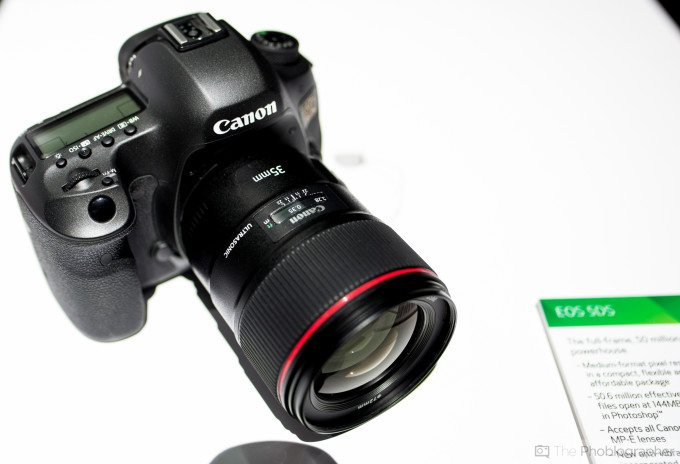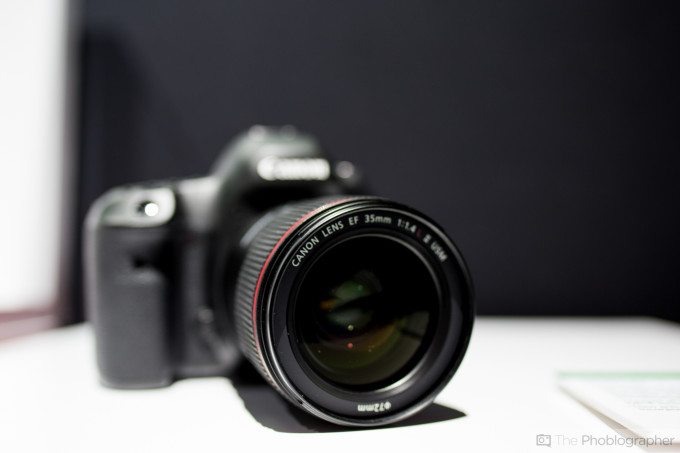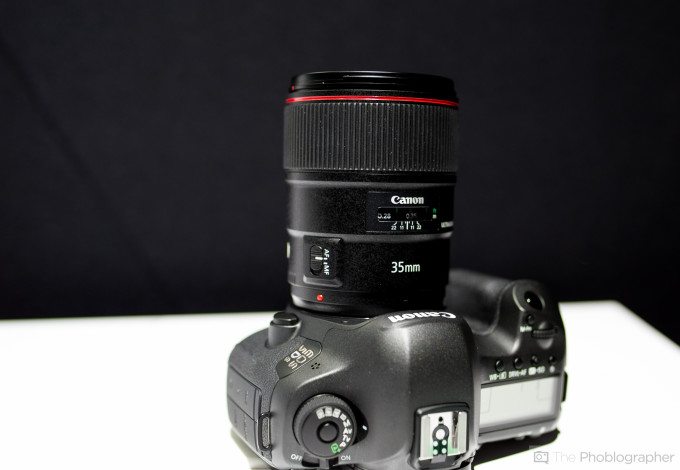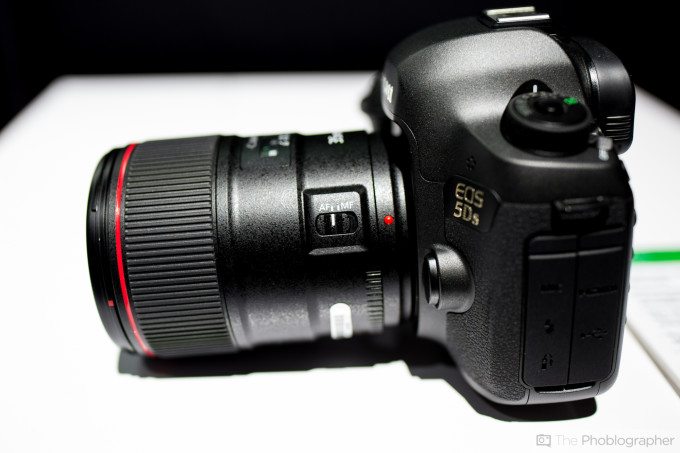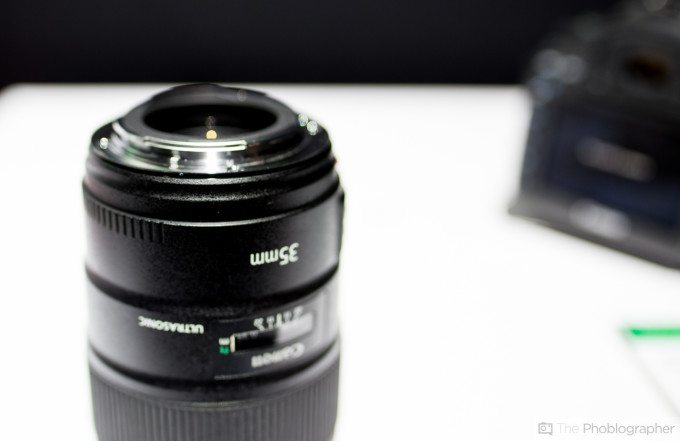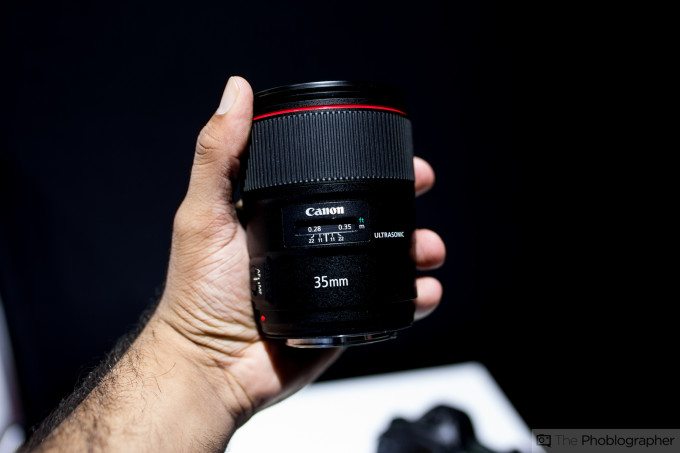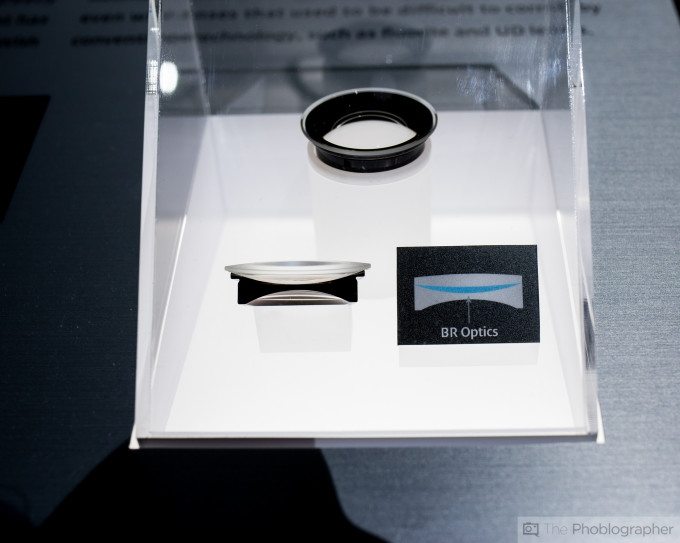Last Updated on 09/10/2015 by Chris Gampat
The Canon 35mm f1.4 L II USM is the successor to the previous lens that was released in 1998. Today at Canon EXPO in NYC, they’re showing off a prototype of the lens along with some of the technology inside of it. What makes this lens so special is the fact that it incorporates some brand new technology from the company called a Blue Refractive Optic. What this does is works to prevent chromatic aberration; and from a sample image that Canon showed us, it greatly lessens the effects of both purple and green fringing in high contrast areas.
But beyond that, the lens features weather sealing–something that the first version didn’t have but really could have used.
Tech Specs
Taken from the B&H Photo listing of the lens.
| Features | |
|---|---|
| Autofocus | Yes |
| Physical | |
|---|---|
| Filter Thread | Front: 72 mm |
| Dimensions (DxL) | Approx. 3.17 x 4.15″ (80.4 x 105.5 mm) |
| Weight | 1.67 lb (760 g) |
Ergonomics
The new Canon 35mm f1.4 L II USM is almost identical to the previous version when it comes to the exterior look of the lens. The front element is large and so a 72mm filter thread is needed to protect it. Notice the token Canon red ring to signify that this is an L series lens.
Move to the top and you’ll find the distance focusing scale. Canon went with plastic over metal–a deviant away from what other lens manufacturers offer. The exterior is softly textured to be a bit like pebbled leather but on plastic. It’s not the most pleasing touch, but it surely fits the function.
On the side of the lens is the only switch/control: the AF/MF switch. The lens doesn’t have IS, so there is no need for any sort of extra control switch there–and that makes things easier.
Build Quality
In terms of how it feels it the hand, the lens feel very much like the previous version but with a bit more texture for better grip on the lens in the rain or inclement weather. And to that end, you’ll be very happy with the new weather sealing around the mount. You can physically feel and see a rubber gasket to prevent moisture from getting in an messing with the electronics
While Canon states that this lens is larger than the original, it is still not very large in the overall scheme of things. In fact, it’s pretty much hand-sized. Put a lens hood on though and you’ll have a different story with a larger overall package.
Canon’s blue refractive optic is the little element in the top of this photo while below is a cut away. In person, if you view it from the right angle you can see lots of blue on the lens itself.
Autofocus
This is what really surprised us.
We tried the lens on the Canon 5Ds; and it seems quick as ever when it came to focusing. In fact, it’s right up there with the speed of the Canon 24-70mm f2.8 L II and even faster than the new 50mm f1.8 STM–which is a significantly smaller and more lightweight lens. It’s impressive and in the hands of a wedding photographer will perform fast enough to capture candid moments during the reception faster than before.
In fact, it’s even right on par with the new Tamron 35mm f1.8 Di VC; which is also a much more lightweight lens and far more affordable.
Image Quality
Unfortunately since we were playing with a prototype, we couldn’t load an SD card into the camera. But the image quality that I was able to see looks promising.
First Impressions
So far, what I’m seeing looks very promising from Canon. Sure, the lens is very expensive, but if it outperforms the very stiff competition from Sigma, Sony, and Tamron, then it may be a hit amongst those that have been with the Canon system for a while. Their lenses have always been very good when you look at them from an artistic point of view (in regards to bokeh and color) but the Blue Refractive optic may take things even further.
We’re going to need to reserve our judgement for the final review.


